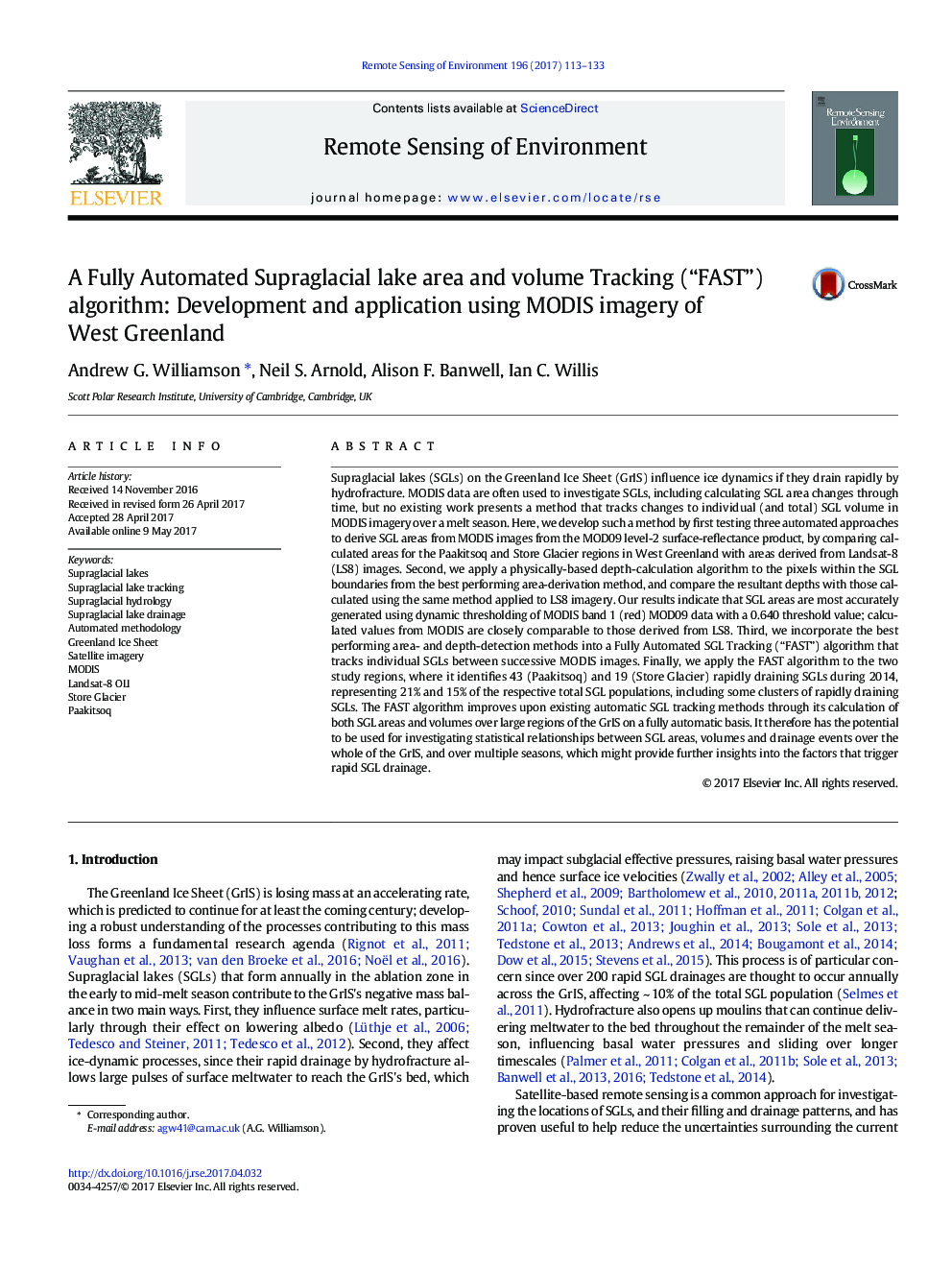| Article ID | Journal | Published Year | Pages | File Type |
|---|---|---|---|---|
| 5754962 | Remote Sensing of Environment | 2017 | 21 Pages |
â¢Developed fully automated algorithm for tracking supraglacial lake area and volumeâ¢Automatic calculation of lake depth and volume improves existing tracking methods.â¢MODIS supraglacial lake areas are best derived using red-band dynamic thresholding.â¢Supraglacial lake volume errors are alike for MODIS and higher-resolution sensors.â¢Automatic identification of rapid supraglacial lake drainage, including clustering
Supraglacial lakes (SGLs) on the Greenland Ice Sheet (GrIS) influence ice dynamics if they drain rapidly by hydrofracture. MODIS data are often used to investigate SGLs, including calculating SGL area changes through time, but no existing work presents a method that tracks changes to individual (and total) SGL volume in MODIS imagery over a melt season. Here, we develop such a method by first testing three automated approaches to derive SGL areas from MODIS images from the MOD09 level-2 surface-reflectance product, by comparing calculated areas for the Paakitsoq and Store Glacier regions in West Greenland with areas derived from Landsat-8 (LS8) images. Second, we apply a physically-based depth-calculation algorithm to the pixels within the SGL boundaries from the best performing area-derivation method, and compare the resultant depths with those calculated using the same method applied to LS8 imagery. Our results indicate that SGL areas are most accurately generated using dynamic thresholding of MODIS band 1 (red) MOD09 data with a 0.640 threshold value; calculated values from MODIS are closely comparable to those derived from LS8. Third, we incorporate the best performing area- and depth-detection methods into a Fully Automated SGL Tracking (“FAST”) algorithm that tracks individual SGLs between successive MODIS images. Finally, we apply the FAST algorithm to the two study regions, where it identifies 43 (Paakitsoq) and 19 (Store Glacier) rapidly draining SGLs during 2014, representing 21% and 15% of the respective total SGL populations, including some clusters of rapidly draining SGLs. The FAST algorithm improves upon existing automatic SGL tracking methods through its calculation of both SGL areas and volumes over large regions of the GrIS on a fully automatic basis. It therefore has the potential to be used for investigating statistical relationships between SGL areas, volumes and drainage events over the whole of the GrIS, and over multiple seasons, which might provide further insights into the factors that trigger rapid SGL drainage.
